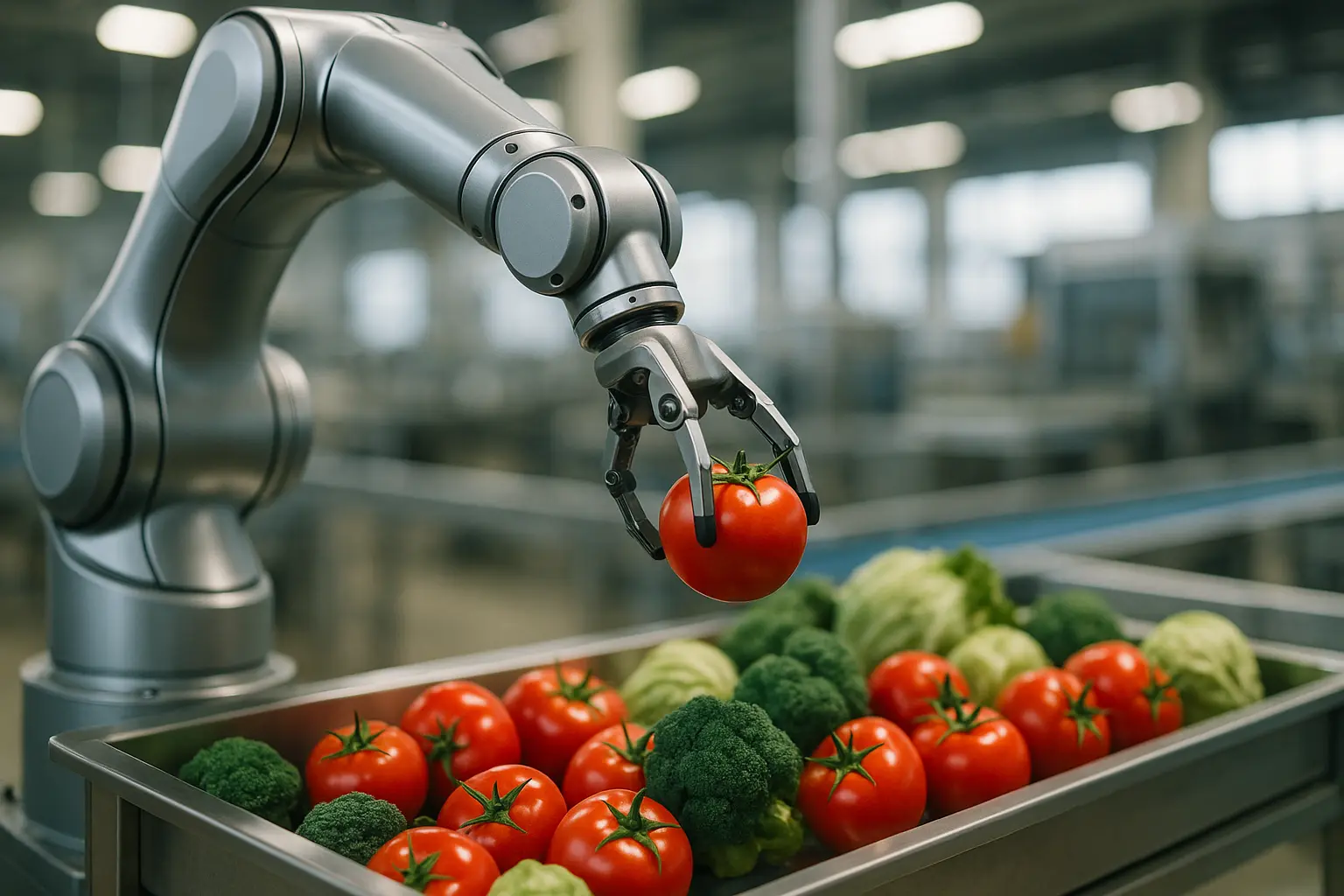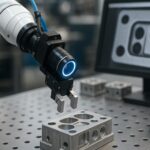In an age where innovation tirelessly reshapes our everyday experiences, the food industry stands at the forefront of transformation. The integration of robots into various stages of food production and packaging is revolutionizing how we perceive and interact with what we consume. As we delve into the myriad ways robotics is leaving its imprint on the industry, we’ll unearth a tale of progress, efficiency, and a glimpse into the future. Let’s explore how automation is not just a trend but a pivotal force in redefining quality, safety, and efficiency in food processing.
Enhancing Production Efficiency
When it comes to the food industry, efficiency is a cornerstone of success. Robots have become instrumental in optimizing production processes. By automating repetitive tasks, they ensure that operations run smoothly and without unnecessary interruptions.
Streamlined Processes
In the hectic world of food processing, speed and accuracy are paramount. Robotic systems are designed to handle tasks like sorting, cutting, and cooking with precision that outpaces human capabilities. This not only enhances the speed of production but also minimizes waste, leading to more sustainable practices.
Reducing Labor Costs
By incorporating robotics, companies can cut down on labor costs significantly. Instead of relying on a large workforce to manage tasks, a smaller, highly trained team can oversee robotic operations. This shift not only reduces expenses but also allows human workers to focus on more strategic roles within the company.
Consistency and Quality
Perhaps one of the most striking advantages of robotic integration is the consistent quality they bring to the table. Robots perform their tasks with unvarying precision, ensuring that every product meets the highest standards. This consistency is vital in maintaining brand reputation and customer satisfaction.
Revolutionizing Packaging Solutions
As vital as production is, packaging plays an equally significant role in the food supply chain. Robots have emerged as game-changers in this arena, delivering innovative solutions that enhance flexibility and speed.
Adaptive Packaging
Gone are the days of one-size-fits-all packaging solutions. With robotic technology, systems can now adapt in real-time to various packaging needs. Whether it’s accommodating different sizes or shapes, robots can adjust their processes to ensure optimal packaging is achieved, boosting both efficiency and appeal.
Enhanced Safety Standards
By automating packaging tasks, companies can considerably reduce the risk of contamination or mishandling. Robots operate in sterile environments, ensuring that the final product meets rigorous safety standards. This emphasis on cleanliness is crucial for maintaining consumer trust and adhering to industry regulations.
Reducing Delivery Time
In today’s fast-paced world, timely delivery is a priority. Robotic packaging solutions facilitate quicker delivery times by streamlining operations and minimizing human error. This not only benefits consumers but also enhances overall supply chain efficiency.
Ensuring Safety and Quality Control
In an industry where safety and quality are paramount, robots have become indispensable allies. Through their unwavering accuracy, they significantly enhance quality control measures.
Precision in Quality Checks
Human error is an inevitable part of any manual process. However, robots are programmed to perform diligent quality checks, ensuring that each product aligns with established standards. This meticulous attention to detail ensures that only the best products reach the market.
Mitigating Human Risks
The food industry is fraught with potential hazards, from handling sharp machinery to exposure to hazardous substances. By delegating these high-risk tasks to robots, companies can ensure the safety of their human workers, reducing the likelihood of accidents and creating a safer work environment.
Real-time Data Monitoring
Equipped with advanced sensors and analytics, robotic systems can track and report on every stage of the processing and packaging phases. This real-time monitoring allows companies to rapidly identify and rectify any issues, ensuring quality is never compromised.
Adapting to Modern Service Demands
In a world where consumer preferences evolve continually, the food industry must adapt to meet new demands. Robotics offers innovative solutions that align perfectly with these modern service expectations.
Personalized Consumer Experiences
As customization becomes increasingly desirable, robots play a vital role in personalizing the consumer experience. From tailoring orders in real-time to accommodating specific dietary needs, automation is making personalized service more accessible and efficient.
Faster Turnaround
With robotics aiding in delivery and service tasks, companies can promise and deliver faster turnaround times. This enhancement is crucial in meeting the instant gratification expectations of today’s consumers.
Sustainable Practices
Modern consumers are more environmentally conscious than ever before. Through robotic innovations, companies can adopt greener practices, such as using sustainable materials and reducing waste, further aligning with consumer values.
As we advance deeper into the realm of robotics within the food industry, it’s essential to remember the harmony between human innovation and mechanical precision. While robots offer unmatched efficiency, safety, and quality, the human element remains crucial in guiding these technologies towards ethical and sustainable practices. Embracing this partnership not only streamlines operations but also enriches consumer experiences, making the world of food production a fascinating blend of tradition and technology. Together, humans and robots are crafting a future where our food is not only produced efficiently but is also a testament to the technological marvels of our time.
FAQ
How do robots contribute to maintaining hygiene in food processing?
Robots are equipped with precision tools and sensors that ensure consistent and thorough cleaning, reducing the risk of contamination. Their ability to work in controlled environments minimizes human contact, thus supporting higher hygiene standards.
In what ways do robots enhance food packaging efficiency?
Robots streamline the packaging process by rapidly sorting, packing, and sealing products with high accuracy. This automation reduces manual errors and increases the speed at which food items are prepared for distribution.
How do robots assist in inventory management within the food industry?
Robots equipped with advanced tracking systems efficiently manage stock levels by monitoring inventory in real-time. They can sort, organize, and even reorder supplies autonomously, ensuring optimal stock levels without human intervention.
What role do robots play in food preparation and cooking?
Robots can perform repetitive and precise cooking tasks, such as chopping, mixing, and cooking, with consistent quality. This automation allows chefs to focus on creative tasks and new recipe development, while ensuring the standardization of dishes.
How do robots improve safety in food production environments?
Robots handle potentially dangerous tasks, such as operating heavy machinery or working with extreme temperatures, which reduces the risk of accidents for human workers. Their precision and reliability contribute to safer production processes overall.



